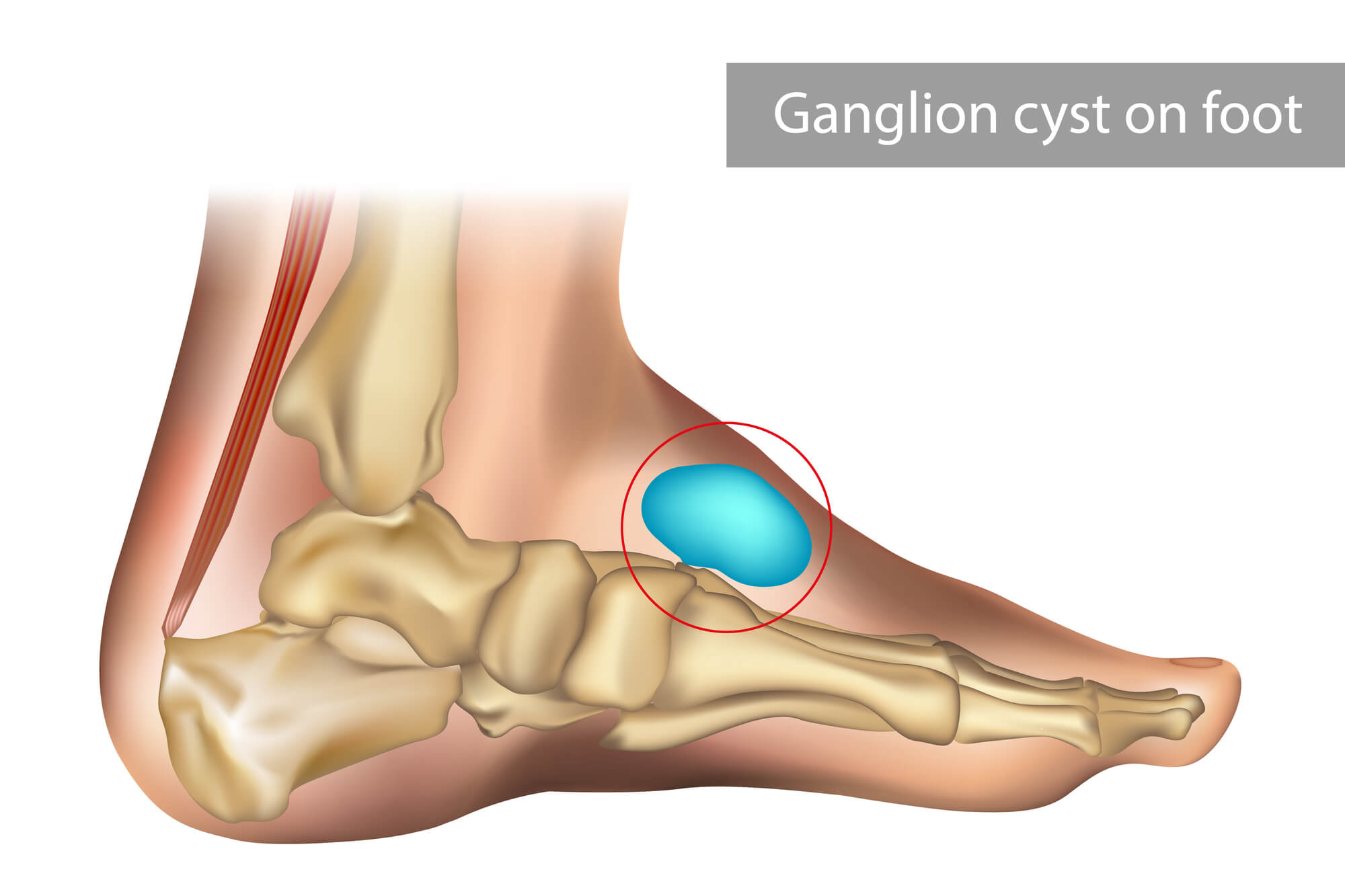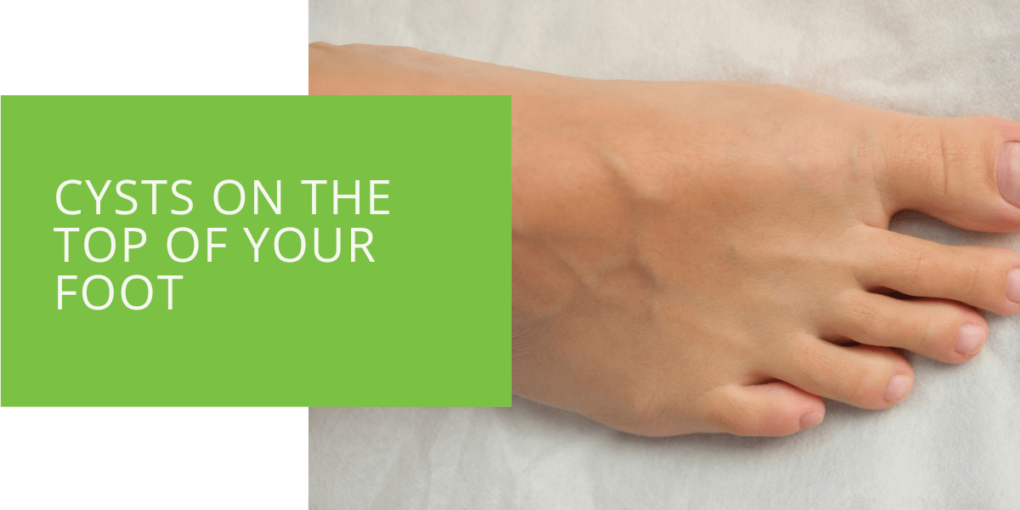Cysts on the Top of Your Foot
Caring for your feet is crucial, as they are the foundation of your body's mobility. Among the various issues affecting foot health, cysts on the top of the foot, particularly ganglion cysts, are common. In this comprehensive guide, we will delve into the intricate world of these cysts, aiming to provide you with a deeper understanding of their causes, symptoms, diagnosis, and the wide array of treatment options available through podiatric care.
Key Takeaways
- While typically non-cancerous, ganglion cysts on the top of the foot can cause discomfort and require prompt attention.
- Recognizing the symptoms of ganglion cysts, including visible lumps and pain, is vital for early diagnosis and intervention.
- Treatment options range from conservative measures like rest and orthotic devices to more invasive approaches like aspiration and surgery, all tailored to individual needs. Specialized care from a skilled podiatrist is essential for optimal outcomes.
Exploring Top-of-the-Foot Cysts
Ganglion Cysts
Ganglion cysts, also known as synovial or soft tissue cysts, merit our primary focus on cysts on the top of the foot. These cysts, characterized by their fluid-filled sacs, typically form near tendons or joints. They can manifest as small, often painless lumps on the top of your foot.
Ganglion cysts are intriguing because their exact cause remains a subject of ongoing research. While we don't have a definitive answer, they are frequently associated with issues related to tendons or joints. The prevailing theory suggests ganglion cysts develop when the tissues surrounding tendons or joints weaken or break down, leading to cyst formation. It's essential to note that while ganglion cysts are generally non-cancerous, they can still impact your foot and ankle health significantly.
What Causes Ganglion Cysts on the Top of the Foot?
Understanding the causes of ganglion cysts is pivotal in managing and preventing their recurrence. As previously mentioned, these cysts are often linked to joint or tendon issues. The prevailing hypothesis suggests ganglion cysts develop due to tissue wear and tear.
It's believed that repeated stress or trauma to the joint or tendon can weaken the surrounding tissues. In response, the body may create a fluid-filled sac, forming a ganglion cyst. While this theory provides valuable insight, the exact mechanism behind the cyst's development is still an active research area.
Common Locations for Top-of-the-Foot Cysts
Understanding where ganglion cysts typically appear on the foot is invaluable for early detection and appropriate intervention. These cysts tend to favor specific locations:
- Dorsal Aspect of the Foot: Ganglion cysts often make their presence known on the top surface of the foot.
- Ankle Joint or Tendon Sheath: You may also find ganglion cysts near the ankle joint or within the tendon sheath.
- Alongside Tendons or Joints: These cysts form alongside tendons or joints.
These common locations are crucial to recognize because ganglion cysts can vary in size and shape. Knowing where they appear, you can promptly identify any unusual lumps or bumps in these areas, which could potentially be ganglion cysts.

Detecting Top-of-the-Foot Cysts
Recognizing the signs and symptoms of ganglion cysts on the top of your foot is paramount for seeking timely medical attention and guidance. Common indications of these cysts include:
- Visible Lump or Bump: Ganglion cysts often present as a noticeable lump or bump on the top of your foot.
- Pain or Discomfort: You may experience pain or discomfort, particularly when wearing shoes or putting pressure on the affected area.
- Cyst Growth: Ganglion cysts can grow over time, leading to an increase in size and potential discomfort.
The presence of a visible lump or bump is one of the most recognizable signs of a ganglion cyst. While these cysts are often painless, they can cause discomfort when they press against nearby nerves or structures. Additionally, the growth of a ganglion cyst over time can exacerbate these symptoms, making early detection and intervention all the more crucial.
If you encounter any of these symptoms, it is strongly advisable to consult a podiatrist promptly. They can provide a precise diagnosis and craft a personalized treatment plan tailored to your specific needs.
Diagnosis and Prognosis
When you visit a podiatrist with concerns about a cyst on the top of your foot, you can expect a comprehensive evaluation. This evaluation typically includes physical examinations, imaging tests such as ultrasounds or MRI scans, and in-depth discussions regarding your medical history and the symptoms you are experiencing.
The diagnostic process is critical in ensuring that the cyst is accurately identified and properly evaluated. Imaging tests, in particular, play a vital role in providing visual insights into the cyst's location, size, and characteristics. The information gathered during this phase allows the podiatrist to formulate an effective treatment plan.
The prognosis for individuals with ganglion cysts on the top of their foot is generally positive, especially when the cysts are detected early. Podiatrists possess diverse treatment options to alleviate discomfort and resolve the issue effectively.
Treatment Options
Nonsurgical Approaches
Conservative Methods for Managing Ganglion Cysts
- Rest and Elevation: Allowing your foot to rest and keeping it elevated can substantially reduce the discomfort associated with ganglion cysts.
- Orthotic Devices: Custom orthotic devices or shoe inserts may be recommended by your podiatrist to provide additional support and cushioning, ultimately enhancing your comfort.
Rest and elevation are fundamental elements of conservative care for ganglion cysts. Reducing stress and pressure on the affected area can facilitate the body's natural healing processes. Orthotic devices, custom-designed to suit your specific needs, can also significantly affect your day-to-day comfort, especially when wearing shoes.
Medical Interventions
- Aspiration: In certain cases, your podiatrist may opt for aspiration, a procedure in which the fluid-filled sac of the ganglion cyst is drained using a needle and syringe. This minimally invasive technique can provide immediate relief from pain and reduce the cyst's size.
- Corticosteroid Injections: Corticosteroid injections are a viable option for reducing inflammation and addressing the pain associated with ganglion cysts.
Aspiration and corticosteroid injections are medical interventions that aim to alleviate the symptoms of ganglion cysts. Aspiration, while a relatively straightforward procedure, requires precision and expertise to ensure effective drainage. Corticosteroid injections, on the other hand, work by reducing inflammation within the cyst, which can lead to symptom relief.
Surgical Solutions
Surgical removal may become necessary when conservative and minimally invasive methods fail to yield satisfactory results. During this procedure, your podiatrist will carefully remove the cyst and address any underlying joint or tendon issues contributing to its formation.
Surgical excision is reserved for cases in which non-surgical approaches have proven ineffective or when the cyst is causing severe discomfort or interfering with your daily activities. It involves completely removing the ganglion cyst and, if applicable, addressing any damage or issues with the surrounding tendons or joints.

Specialized Care for Ganglion Cysts
Ganglion cysts on the top of the foot demand specialized attention from a podiatrist with expertise in these conditions. These specialists can offer tailored treatment plans that ensure the best possible outcome for your foot and ankle health.
Ganglion cysts can be intricate to manage, and specialized care is essential for achieving the most favorable results. A podiatrist with experience in dealing with ganglion cysts will understand the condition in-depth, enabling them to develop customized treatment strategies based on your unique circumstances.
Conclusion
Cysts on the top of your foot, particularly ganglion cysts, can be a source of discomfort and concern. However, with the guidance of a skilled podiatrist, you can effectively address these issues. Our expertise in diagnosing and treating ganglion cysts ensures that you receive personalized care tailored to your specific needs.
Don't allow top-of-the-foot cysts to hinder your mobility or cause unnecessary pain. Take the first step towards relief by scheduling an appointment with us today. We are deeply committed to your foot health and well-being and are here to support you every step of the way.

